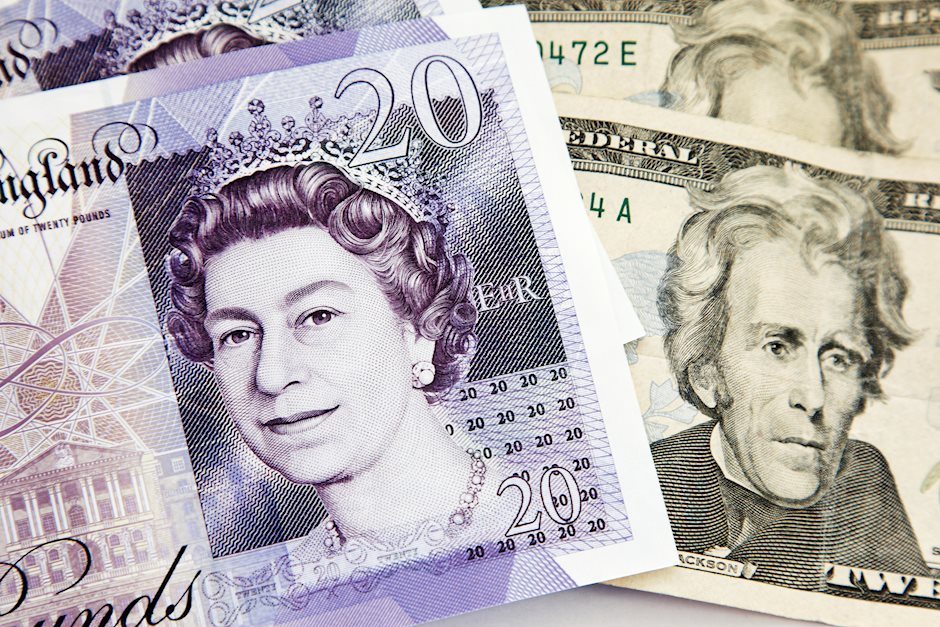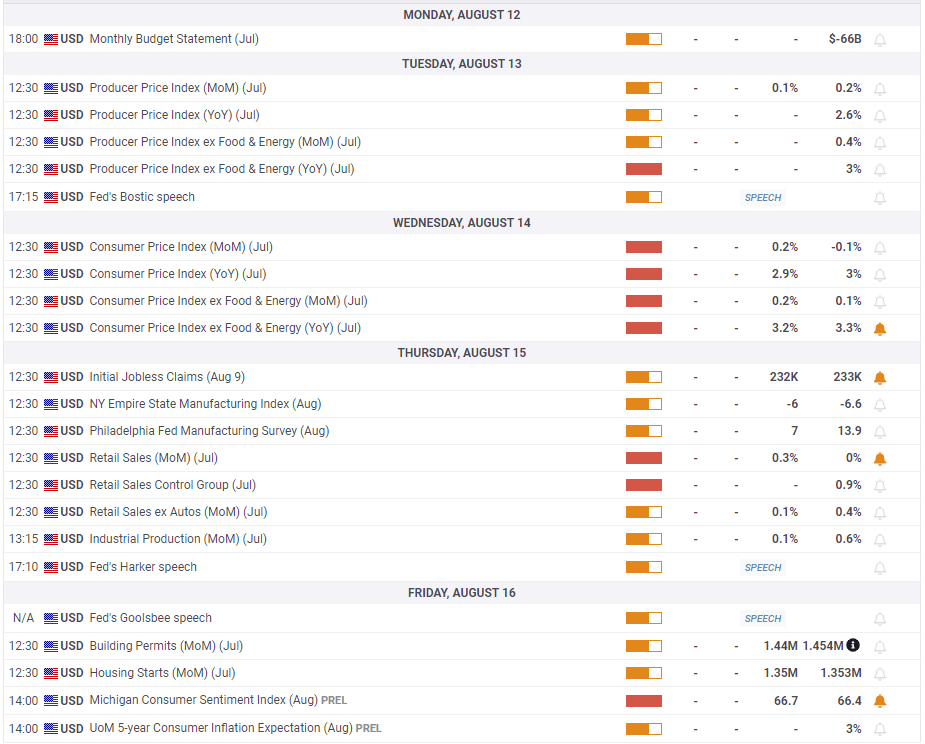GBP/USD Weekly Forecast: Pound Sterling could determine next direction after UK and US CPI readings
- The Pound Sterling extended its losing streak to reach five-week lows against the US Dollar.
- GBP/USD braces for top-tier UK and US inflation data in the upcoming week.
- The outlook remains for an extended Pound Sterling recovery while the 200-day SMA holds.

The Pound Sterling (GBP) extended its downside momentum against the US Dollar (USD), dragging GBP/USD below the 1.2700 mark before buyers jumped back in the game toward the end of the week.
Pound Sterling pounded but buyers re-emerge
GBP/USD emerged as a tale of two halves, as it extended the previous week’s losing streak in the early part of the week only to stage an impressive comeback in the second half. This time around, the primary driver behind the Pound Sterling’s price action was risk sentiment, which significantly impacted the higher-yielding currency.
Risk-off flows extended into the weekly opening on Monday, in the aftermath of Friday’s weak US labor market report, which rekindled US recession fears. Nonfarm payrolls increased by 114,000 jobs last month after rising by a downwardly revised 179,000 in June, the US Bureau of Labor Statistics (BLS) said on Friday. The Unemployment Rate climbed to 4.3% from 4.1% in June.
Mounting US economic slowdown concerns prompted markets to wager aggressive US Federal Reserve (Fed) easing this year. Markets predicted 115 basis points (bps) of cuts this year while pricing in a 74% chance of the Fed lowering rates by 50 bps in September on Monday, according to the CME Group’s FedWatch tool.
Risk-aversion heightened also after US Secretary of State Tony Blinken during the G7 meeting on Sunday that an attack by Iran and Hezbollah against Israel could start as early as Monday, Axios reported, citing three sources.
Subsequently, US and Arab leaders tried to diffuse the situation between Iran and Israel. Meanwhile, the US and Japanese officials provided assurances to calm nerves after Monday’s bloodbath across the financial markets. However, traders remained anxious due to the looming risks of an Iran-Israel war.
Citing two sources familiar with intelligence on the matter, CNN News reported late Wednesday that Hezbollah appears increasingly set to act against Israel “independent” of an expected Iranian response to the recent killing of two terror leaders. According to CNN, multiple officials say Iran seems to still be hashing out its retaliation plans.
Geopolitical tensions combined with ‘US hard-landing fears’ continued to act as a headwind to the GBP/USD pair, knocking it down to fresh five-week lows of 1.2665.
In the latter part of the week, risk sentiment witnessed a dramatic turnaround following the release of the surprisingly strong US weekly Jobless Claims data.
Initial claims for state unemployment benefits fell 17,000 to a seasonally adjusted 233,000 for the week ended August 3, the Labor Department said on Thursday, August 8, the largest drop in about 11 months, suggesting the gradual softening in the labor market remains intact while calming markets nerves over a potential US recession.
Meanwhile, conciliatory remarks from Richmond Fed President Thomas Barkin and Chicago Fed President Austan Goolsbee also added to the market optimism. The Pound Sterling capitalized on the return of risk appetite and rebounded firmly against the US Dollar to retest the 1.2800 threshold.
Hotter-than-expected Chinese inflation data and dovish remarks from Kansas City Fed Chief Jeffrey Schmid accentuated the risk recovery and helped the pair extend its recovery momentum. The monetary policy divergence between the Bank of England (BoE) and the Fed also returned to the fore ahead of next week’s critical inflation data from the UK and the US.
The week ahead: High-impact UK and US data to steal the show
Following a data-sparse week, Pound Sterling traders strap themselves for a raft of top-tier economic data releases from both sides of the Atlantic.
The main highlight of the week will be the Consumer Price Index (CPI) data due from the US and the UK on Wednesday. In the meantime, Fedpeak, UK employment data and the US Producer Price Index (PPI) data will entertain traders in the early part of the week.
On Thursday, the UK preliminary Gross Domestic Product (GDP) report for the second quarter will be published alongside the monthly print and the Manufacturing Production data. The US calendar will feature the Retail Sales report, the usual weekly Jobless Claims and the Industrial Production data, on the same day.
The UK Retail Sales data and the US University of Michigan (UoM) preliminary Consumer Sentiment and Inflation Expectations data on Friday will wrap up an action-packed week.
Apart from the data, all eyes will be on the Middle East geopolitical escalation between Iran and Israel and also on the speeches from Fed policymakers.
GBP/USD: Technical Outlook
GBP/USD remained at the mercy of sellers and extended the downside break of the rising trendline support, then at 1.2835.
However, Pound Sterling buyers continued to defend the key 200-day Simple Moving Average (SMA) at 1.2660.
Looking ahead, the pair could see the extension of the recovery but it could be limited so long as the 14-day Relative Strength Index (RSI) stays below the 50 level.
Currently, the leading indicator is trading near 45.0, suggesting that GBP/USD appears to be a ‘sell the bounce’ trade.
Therefore, recapturing the 50-day SMA at 1.2787 on a weekly closing basis is critical to unleashing further recovery.
Further up, the 21-day SMA at 1.2858 could challenge the bearish commitments. The next topside barrier is seen near the 1.2900 region, where the March 8 high and the rising trendline support-turned-resistance coincide.
On the flip side, sellers need to crack the 100-day SMA and 200-day SMA confluence zone between 1.2670 and 1.2660 on a sustained basis to open the door for further downside.
The June low of 1.2613 and the mid-May low at around 1.2510 will be next on sellers’ radars.
Inflation FAQs
Inflation measures the rise in the price of a representative basket of goods and services. Headline inflation is usually expressed as a percentage change on a month-on-month (MoM) and year-on-year (YoY) basis. Core inflation excludes more volatile elements such as food and fuel which can fluctuate because of geopolitical and seasonal factors. Core inflation is the figure economists focus on and is the level targeted by central banks, which are mandated to keep inflation at a manageable level, usually around 2%.
The Consumer Price Index (CPI) measures the change in prices of a basket of goods and services over a period of time. It is usually expressed as a percentage change on a month-on-month (MoM) and year-on-year (YoY) basis. Core CPI is the figure targeted by central banks as it excludes volatile food and fuel inputs. When Core CPI rises above 2% it usually results in higher interest rates and vice versa when it falls below 2%. Since higher interest rates are positive for a currency, higher inflation usually results in a stronger currency. The opposite is true when inflation falls.
Although it may seem counter-intuitive, high inflation in a country pushes up the value of its currency and vice versa for lower inflation. This is because the central bank will normally raise interest rates to combat the higher inflation, which attract more global capital inflows from investors looking for a lucrative place to park their money.
Formerly, Gold was the asset investors turned to in times of high inflation because it preserved its value, and whilst investors will often still buy Gold for its safe-haven properties in times of extreme market turmoil, this is not the case most of the time. This is because when inflation is high, central banks will put up interest rates to combat it. Higher interest rates are negative for Gold because they increase the opportunity-cost of holding Gold vis-a-vis an interest-bearing asset or placing the money in a cash deposit account. On the flipside, lower inflation tends to be positive for Gold as it brings interest rates down, making the bright metal a more viable investment alternative.
Premium
You have reached your limit of 3 free articles for this month.
Start your subscription and get access to all our original articles.
Author

Dhwani Mehta
FXStreet
Residing in Mumbai (India), Dhwani is a Senior Analyst and Manager of the Asian session at FXStreet. She has over 10 years of experience in analyzing and covering the global financial markets, with specialization in Forex and commodities markets.



















